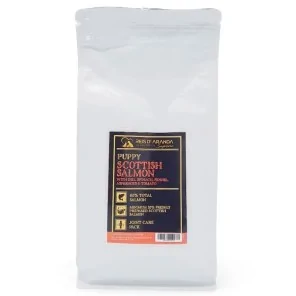The Tornjak originated from genetically homogeneous, almost extinct, indigenous shepherd dogs. These dogs have...
THE HAVANESE BICHON
THE ORIGIN OF THE BICHON HABANERO
The Havanese was the dog of the colonial aristocracy until the beginning of the 20th century, when the American intervention imposed its fashions, being replaced by the Chihuahua, the Pomeranian or the Pekingese, becoming the favourite toy of the Cuban family who, almost unconsciously, contributed to keeping the breed alive.
Already during the 20th century a wide taste for dog breeding began in Cuba, the first dog shows were held on the island, where mostly imported breeds prevailed, with only a few breeders dedicated to the Bichon Havanese. With the triumph of the revolution in 1959, dog breeding suffered a hard blow, as it became a sign of the bourgeois mentality, not in accordance with the popular principles of the new changes. Economic reconstruction made people forget their dogs, but the breed spread from the United States to Europe, starting with a small number of emigrated dogs, mainly from Sweden, Finland, Holland and Germany.
Meanwhile in Cuba, at the beginning of the eighties, a revival of the hobby began to be seen and the first breed clubs were founded. Even so, the Bichon Havanese remained submerged in oblivion, far from the recognition of the general public, despite the fact that the Fédération Cynologique Internationale (FCI) had approved a standard for the breed since 1963.
In 1987 the Federación Cinológica de Cuba was created, becoming again an associate member of the FCI, and it is precisely in that year when the heritage of the Havanese was withdrawn from Cuba, so that today it appears in the most technical literature as originating from the Western Mediterranean. It was at this point that awareness was raised and breed lovers got together and, after a careful search, found almost all the Havanese Bichons left in the country and began to work with them to rescue the breed. In 1991 the Club Cubano del Bichón Habanero (Cuban Havanese Club) was founded, which carried out selection and improvement work on the breed, and already had several Cuban champions, the first being Puppy, winner of the Expocanina 93.
THE STANDARD OF THE BICHON HABANERO
The Bichon Havanese has a body longer than tall, like the cats. It has a slightly arched back and a tucked up belly. The tail may take the form of an erect stick or be curled. Their legs are short and compact and are noted for their agility - they are dogs that can run fast like the wind!
On the other hand, they have a flat, oval head with a protruding forehead, which gives them a dignified air and a friendly expression. Often their curls form a nice fringe. The muzzle is tapering towards the end, but not pointed. All have a black nose and very thin lips.
The eyes are almond-shaped and dark brown with a well marked outline, also dark. The ears are set high, of medium length and with a slightly pointed tip; they fall over the sides of the head in a fold.
The undercoat has a rough texture and is rather sparse. On the other hand, its outer coat is abundant, very soft and long, reaching up to 20 cm. It is usually straight, wavy or has looped highlights. The most common colours are solid white without spots, light fawn, black or Havanese (tobacco brown).
CARE OF THE HAVANESE
As is to be expected, the coat of these dogs tends to tangle easily and tends to drag weeds and leaves during walks. Therefore, a thorough brushing at least every other day is recommended. It is not necessary to take him to the groomer very often, although to avoid discomfort it is best to trim the hair that grows around his eyes.
The ear area should be checked frequently, at least once a week. Hair near the pinna should also be removed. Nails should be trimmed every three to four weeks, as they grow quickly. Take your dog to a vet to have this done until you feel completely confident.
Although lively, these dogs do not need a lot of activity. A walk with moderate-intensity play once a day will be more than enough to keep them balanced and fit. They enjoy water very much, so you can take them swimming and make them immensely happy.
THE HEALTH OF THE BICHON HABANERO
PATELLA LUXATION: We speak of patella luxation in dogs when the patella, a small bone located in front of the knee joint and which needs to be correctly positioned for the correct functioning of the animal's limb, comes out of its place, the trochlea, causing pain and functional weakness in the dog.
Among the dislocations, medial dislocation is the most frequent. It occurs in 80% of cases, while lateral luxation only occurs in 20%. Between 30% and 50% of the cases are bilateral and more frequent in females than in males, especially in small breeds and toys.
Lateral luxations can occur in small adult breeds and in puppies of large and giant breeds.
It is a pathology characterised by a misalignment of the limb, deformations occurring during the development of the animal, which cause the patella to move out of place. It may be due to a congenital disease or, in some cases, caused by trauma.
Dogs suffering from this congenital condition should not be used in breeding as it is passed down through the generations.
Generally, dogs with patellar luxation due to trauma are associated with a rupture of the anterior cruciate ligament of the knee.
HIP DYSPLASTIA (CDD): Canine hip dysplasia (CDD) is a problem that dogs begin to have as they grow older and causes instability or lack of adjustment (laxity) in the hip joint. This laxity in the hip joint is responsible for possible clinical signs (symptoms) of hip pain and limb dysfunction and also progressive changes in the joint. The hip joint is an enarthrosis, i.e. it consists of a ball and cup-shaped element; the continuous abnormal movement of the femoral head (the ball) deforms the acetabulum (the cup). The long-term response to this joint laxity is progressive loss of cartilage, scar tissue formation around the joint, and the development of osteophytes (bony protrusions) around the ball and cup.
The cause of CDD is multifactorial, but hereditary factors (genetics) are the biggest single risk factor. Rapid weight gain and growth from overfeeding can complicate the development of CDD. Hip dysplasia occurs primarily in large breeds of dogs.
CATARACTS: Cataracts occur when the inner lens of the eye (the crystalline lens) loses transparency. It is a process that occurs naturally with age, although in some breeds it occurs more frequently than in others, and can have several causes:
- Ageing
- Hereditary disorders (congenital cataract).
- blows, wounds or trauma to the eye
- Inflammatory processes of the eye
- Other pathologies, mainly diabetes (diabetic cataract)
PRA [Progressive Retinal Atrophy]: There are two types of photoreceptor neurons in the retina: rods (located more in the periphery of the retina) and cones (located closer to the centre). These photoreceptors gradually deteriorate so that the retina is no longer able to capture light and, as it is unable to send information to the brain, the animal gradually stops seeing. On many occasions, it is difficult to detect and the owner does not realise until the disease is very advanced.
It is a hereditary disease that affects both eyes equally, some breeds are more predisposed than others but it can affect any breed and animal.
These diseases are preventable with the health tests that are developed in ethical breeding, no serious breeder breeds with sick animals or does not test for these diseases, something that is totally ignored in animals coming from macro-breeding or private breeding (the neighbour's dog with the neighbour's dog, because they ‘look alike’, without taking anything else into account).
THE PERSONALITY OF THE BICHON HABANERO
The dogs of this breed have an affectionate and open temperament, which makes them immediately win a place in the heart of any family. They enjoy the company of adults and children, and love to play and clown around. In fact, they are dogs that were used a lot in the old circuses.
The Havanese is also a perfect companion for people who live alone, as he will always be ready to cheer you up with some of his cuteness. This particular sensitivity means that it is increasingly being chosen as a therapy or assistance dog for people with disabilities.
Its friendly nature makes it a highly recommended choice for those who have never owned a dog before. It establishes good relations with other dogs and pets in the home, although it can sometimes be a little distrustful of strangers.
When it comes to training, it is alert, very intelligent and constantly seeks the approval of its owners. If properly socialised, the Havanese will never be shy or fearful.
Despite being quite active, they have no problem adapting to life in urban flats or houses without a yard. Keep in mind that they are dogs that like to interact with people, so they are not suitable for families who do not have time to spend with them or for adults who spend all day out of the house. Loneliness is bad for a Havanese and they will express their discomfort with constant barking and destructive behaviour.
CONCLUSION
The Havanese is a little known and less popular breed than the Maltese, but its great character, active lifestyle and wide variety of colours make it a great choice for sporty families who are committed to caring for its coat.
Leave a comment
Log in to post comments
















